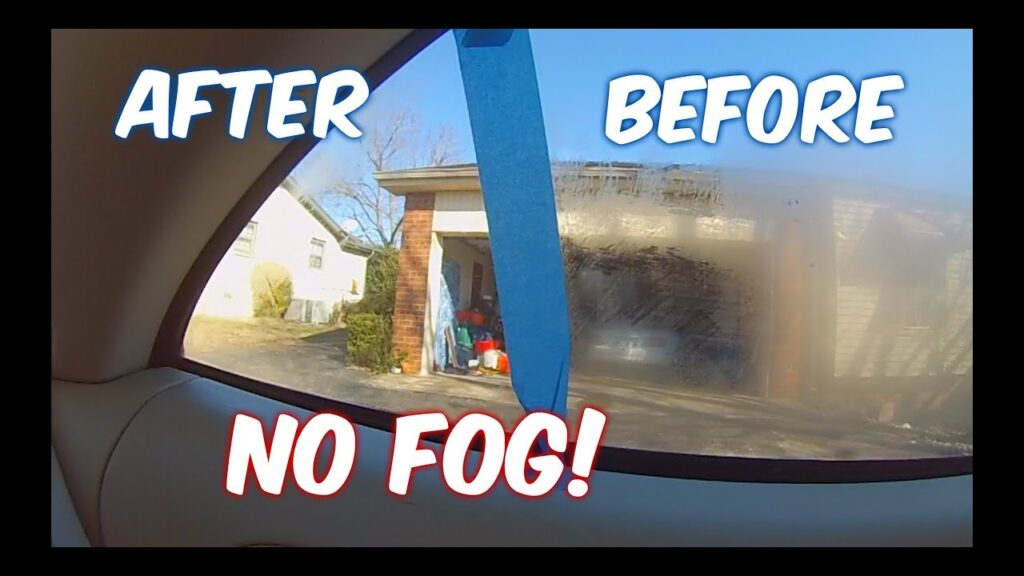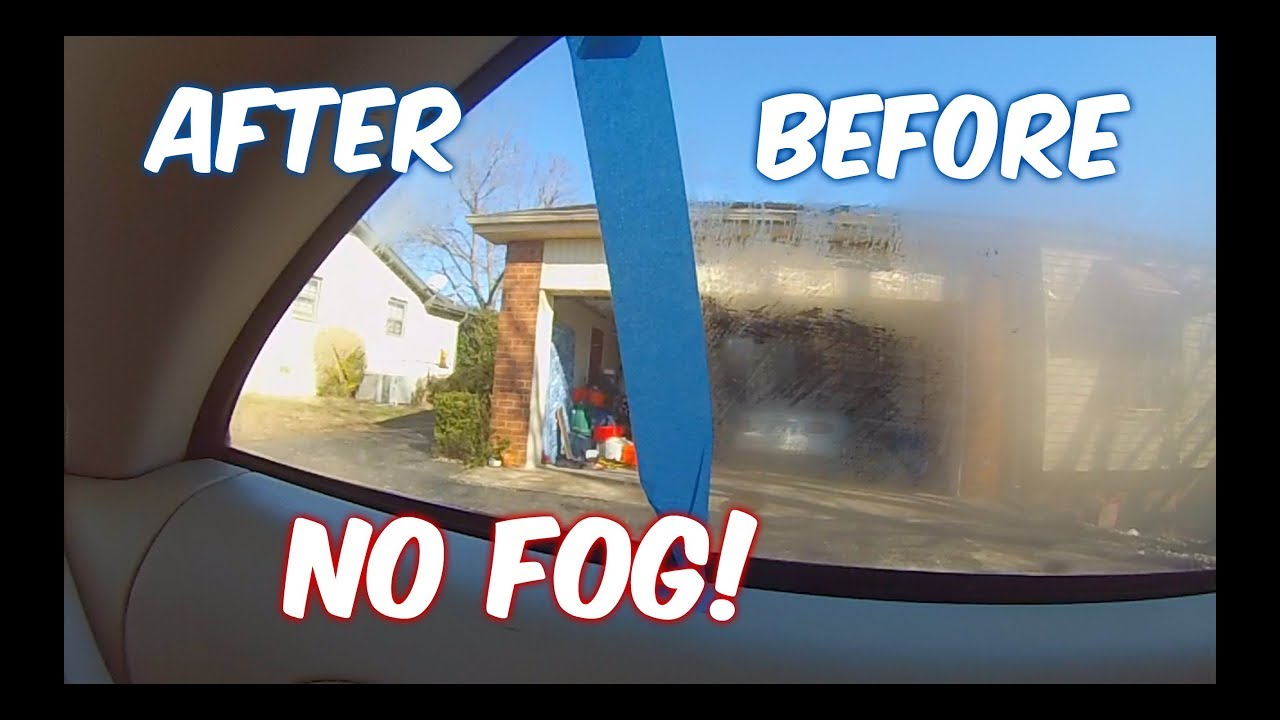
Perfect Visibility: Stop Windshield Fog and Drive Safely
The simple act of driving, a routine for many, hinges on one critical factor: clear visibility. While we often take it for granted, our ability to see the road, other vehicles, and potential hazards is paramount to our safety. And what’s a more persistent enemy of clear visibility than windshield fog? This seemingly minor inconvenience can rapidly escalate into a dangerous situation, obscuring your view and increasing the risk of accidents. But fear not, because understanding the causes and employing effective solutions can help you achieve perfect visibility and drive with confidence, no matter the weather.
Windshield fog, or condensation, forms when warm, moist air comes into contact with a cooler surface – in this case, your windshield. This creates tiny water droplets that scatter light, blurring your vision. The severity of the fog depends on the temperature difference between the inside and outside of your car, as well as the humidity levels. But what specifically causes this fog to form, and how can we combat it?
Understanding the Science of Windshield Fog
The physics behind windshield fog is straightforward. Warm air holds more moisture than cold air. When warm, moisture-laden air inside your car encounters the cold glass of the windshield, the water vapor condenses, turning into liquid droplets. This process is similar to how a cold glass of water “sweats” on a humid day. Several factors contribute to the formation of this fog:
- Temperature Differential: The greater the difference in temperature between the inside and outside of your car, the more likely fog is to form. This is particularly true during the transition seasons (spring and autumn) when temperatures fluctuate significantly.
- Humidity: High humidity levels, both inside and outside the car, exacerbate the problem. More moisture in the air means more water vapor available to condense.
- Breathing and Perspiration: Human respiration and perspiration release moisture into the air inside the car, further increasing humidity.
- Leaks: Water leaks from the vehicle’s body or through the air conditioning system can introduce additional moisture into the cabin.
- Dirty Windshield: A dirty windshield provides more surface area for condensation to occur, making fog formation more likely.
Understanding these factors is the first step toward achieving perfect visibility.
Immediate Solutions: Clearing the Fog Right Now
When you find yourself facing a fogged-up windshield, immediate action is crucial. Here are the most effective methods to quickly restore your vision:
- Defroster: This is your primary weapon. Turn on your car’s defroster, both front and rear if applicable. The defroster blows warm, dry air onto the windshield, quickly melting the condensation. Point the vents towards the windshield.
- Air Conditioning (AC): Surprisingly, using the AC can be highly effective, even in cold weather. The AC system removes moisture from the air, which helps to dry out the windshield. Turn on the AC and direct the air towards the windshield.
- Recirculation vs. Fresh Air: Experiment with both settings. In some cases, recirculating the air inside the car can help to warm up the windshield and reduce condensation. In other cases, bringing in fresh, drier air from the outside can be more effective. The best setting depends on the specific conditions.
- Crack the Windows: If the outside air is drier than the air inside your car, slightly opening the windows can help to equalize the humidity and reduce fogging.
- Wipers: Use your windshield wipers to physically remove the condensation. However, this is only a temporary solution, as the fog will likely return unless you address the underlying cause.
These immediate solutions are designed to give you perfect visibility in the short term. However, for lasting results, you need to address the underlying causes.
Long-Term Strategies: Preventing Windshield Fog
Preventing windshield fog is the key to maintaining perfect visibility on a consistent basis. Here are several strategies to minimize fog formation:
- Regular Cleaning: A clean windshield is less prone to fogging. Clean both the inside and outside of your windshield regularly with a glass cleaner.
- Anti-Fog Treatments: There are various anti-fog products available, such as sprays and wipes, that create a barrier on the windshield to prevent condensation. These products can be effective, but they typically require regular reapplication.
- Proper Ventilation: Ensure your car’s ventilation system is functioning correctly. Check your cabin air filter and replace it if it’s dirty or clogged. A clean filter allows for better airflow and reduces humidity buildup.
- Check for Leaks: Water leaks can introduce moisture into the car. Inspect your vehicle for any leaks, especially around the windows, doors, and sunroof. Repair any leaks promptly.
- Control Humidity: Minimize sources of moisture inside your car. Avoid leaving wet items, such as umbrellas or damp clothing, inside the vehicle. Consider using a dehumidifier if you live in a particularly humid climate or if you notice persistent fogging issues.
- Pre-emptive Action: Before driving in conditions prone to fog, turn on your defroster and AC for a few minutes to warm up the windshield and dry out the air inside the car. This can help to prevent fog from forming in the first place.
By implementing these long-term strategies, you can significantly reduce the likelihood of windshield fog and maintain perfect visibility.
Choosing the Right Products: A Guide
The market offers a variety of products designed to combat windshield fog. Choosing the right ones can make a significant difference in your driving experience. Here’s a breakdown:
- Glass Cleaners: Opt for a high-quality glass cleaner specifically designed for automotive use. Avoid cleaners with ammonia, as they can damage some window tinting.
- Anti-Fog Sprays: These sprays typically create a hydrophobic layer on the windshield, preventing condensation from forming. Look for products that are easy to apply and provide long-lasting protection.
- Anti-Fog Wipes: These are convenient for on-the-go use. They offer a quick and easy way to remove fog and can be stored in your glove compartment.
- Dehumidifiers: For persistent fogging issues, a small, portable dehumidifier for your car can be a worthwhile investment.
- Microfiber Cloths: Always use clean microfiber cloths to apply glass cleaners and anti-fog products. This will prevent streaks and ensure optimal performance.
Selecting the right products complements your efforts to achieve perfect visibility.
Beyond the Basics: Advanced Tips and Tricks
While the methods outlined above are generally effective, here are some advanced tips and tricks to further enhance your efforts to combat windshield fog and ensure perfect visibility:
- Consider the Season: During the winter months, when temperatures are extremely low, preheating your car can help to reduce fog formation. This allows the windshield to warm up gradually, minimizing condensation.
- Address Internal Sources: If you frequently carry passengers, be mindful of their breathing and perspiration. Encourage them to avoid breathing directly onto the windshield.
- Check Your HVAC System: Ensure your car’s heating, ventilation, and air conditioning (HVAC) system is functioning properly. A malfunctioning system can exacerbate fogging issues. Have your system inspected by a qualified mechanic if you suspect a problem.
- Regular Maintenance: Regular car maintenance, including replacing your cabin air filter and checking for leaks, is crucial for preventing fog.
- Driving Habits: Adjust your driving habits to minimize fogging. For example, avoid driving with the windows closed and the air recirculation setting on for extended periods.
These additional tips can help you maintain perfect visibility in even the most challenging conditions.
The Importance of Safe Driving Practices
Maintaining perfect visibility is not just about convenience; it’s about safety. Fogged-up windshields significantly impair your ability to see the road, other vehicles, and potential hazards. This increases the risk of accidents. Always remember to:
- Slow Down: Reduce your speed in foggy conditions. This gives you more time to react to unexpected events.
- Increase Following Distance: Increase the distance between your car and the vehicle in front of you. This provides you with more time to stop if necessary.
- Use Headlights: Turn on your headlights, even during the day, to improve your visibility to other drivers.
- Be Aware of Your Surroundings: Pay close attention to your surroundings. Scan the road ahead, check your mirrors frequently, and be prepared for sudden stops or changes in traffic flow.
- Pull Over If Necessary: If the fog is too thick and impairs your vision significantly, pull over to a safe location and wait for the conditions to improve.
Prioritizing these safe driving practices, in addition to addressing windshield fog, will greatly improve your safety on the road. Achieving perfect visibility is a journey that requires ongoing attention and commitment. By understanding the science behind fog, implementing effective solutions, and practicing safe driving habits, you can significantly reduce the risk of accidents and drive with confidence, regardless of the weather conditions.
Conclusion: See Clearly, Drive Safely
Windshield fog is a common problem, but it doesn’t have to be a constant source of frustration and danger. By understanding the causes, employing immediate solutions, and implementing long-term prevention strategies, you can achieve perfect visibility and drive safely in all conditions. Remember to regularly clean your windshield, use anti-fog products, maintain your car’s ventilation system, and practice safe driving habits. With a proactive approach, you can keep your windshield clear and enjoy a safer, more enjoyable driving experience. The journey to perfect visibility begins with awareness and ends with confidence on the road.
[See also: How to Maintain Your Car’s Windshield, Best Windshield Wipers for Rain and Fog, Tips for Safe Winter Driving]


